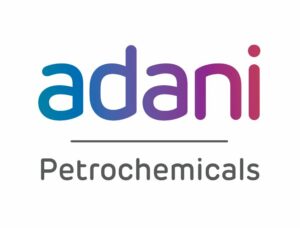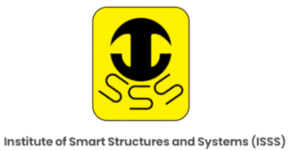Vienna University of Technology and University for Continuing Education Krems
IoT Concepts in Automation Systems and their Impact on Security
Today, IoT devices are ubiquitous. Being cost effective and easy to deploy, they are being considered for many applications outside their original domain, which was consumer electronics. Factory and process automation, smart buildings and homes, and in general Industry 4.0 are application fields is which the use of IoT technology is gaining popularity, often in addition to existing, classical communication architectures on the operational technology (OT) level. IoT devices, however, typically have a different philosophy for communication and data exchange than traditional OT systems, such as cloud applications in the background. This makes IoT easy to use for end customers, but poses security challenges by bypassing established security architectures like the classical defense-in-depth concept defined, for instance, in IEC 62443. The talk will highlight today’s security needs and concepts of industrial applications demonstrated by typical examples. Furthermore we will look at possible new attack surfaces opened by IoT applications and show pathways how to bridge the gap between open IoT concepts and traditionally closed industrial approaches.
TATA Consultancy Services – Research, Bangalore, India
Information Processing Techniques for Mobile Sensing at Scale
Mobile sensing systems offer the benefit of deterministic (sample at the ‘target’) as well as opportunistic (sample ‘on-the-go’) sensing at large scale, thereby enabling applications that were previously beyond reach. They are, nevertheless, constrained in terms of available energy resources required for sensing, processing, storage, and communication; and therefore, should be efficiently tradedoff for accuracy and/or latency. With the help of three case-studies: (i) RF sensing (GPS) with sensor nodes, (ii) acoustic sensing with drones, and (iii) visual sensing with mobile phones; this talk will present different information processing techniques that piggyback on the platform mobility to improve the sensing performance, while adhering to the system limitations and application scope.
Integrating the Cyber World with the Internet of Things: How to transform cities and industries into smarter places
A smart city represents an improvement of today’s cities both functionally and structurally, that strategically utilizes many smart factors, such as information and communications technology (ICT), to increase the city’s sustainable growth and strengthen city functions, while ensuring citizens’ quality of life and health. Cities can be viewed as a microcosm of “objects” with which citizens interact daily: street furniture, public buildings, transportation, monuments, public lighting and much more. Moreover, a continuous monitoring of a city’s status occurs through sensors and processors applied within the real-world infrastructure. Industrial sites represent similar scenarios, where data collected from distributed objects allow to actuate powerful control strategies.
The Internet of Things (IoT) concept imagines all these objects being “smart”, connected to the Internet, and able to communicate with each other and with the external environment, interacting and sharing data and information. Each object in the IoT can be both the collector and distributor of information regarding mobility, energy consumption, air pollution, as well as potentially offering cultural and tourist information.
As a consequence, cyber and real worlds are strongly linked in a smart city, such as in industrial site. New services can be deployed when needed and evaluation mechanisms will be set up to assess the health and success of the system under control. This talk will present some innovative developments in areas related to smart cities and smart industries, leveraging on the features supported by network intelligence at the edge of the network.
Macquarie University, Australia
IoT Enabled Smart Sensors for Home, City and Environmental Monitoring addressing UN’s Sustainability Development Goals
The advancement of sensing technologies, embedded systems, wireless communication technologies, nano-materials, and miniaturization makes it possible to develop IoT enabled smart sensing systems. IoT enabled sensors empowers the vision of a Smart City to become a reality. IoT enabled sensors provides real time environmental data which will provide full awareness of weather/climate and can be used to take any strategic/corrective actions to address issues. This seminar will discuss fabrication and developmental works on IoT enabled sensors at Macquarie University based on MEMS as well as flexible materials for home, health and environmental monitoring. The success of the Commonwealth funded (Govt. of Australia) Smart city project and New South Wales Government Funded Water project will be shared. The seminar will address how the research activities fulfilling the sustainability development goals of UN
IIT Guwahati, India
Microfluidic Nanobiosensors Targeting Multiplexed Diagnostics on a Chip
The vision of improving the quality of human health not only requires state-of-art and frugal diagnostic facilities accessible to the ‘last mile’ population but also an ecosystem for the best practices and utilization. In this direction, the existing ecosystem and the conventional diagnostic facilities face limitations with institution based centralized operation, costly installation-operating-maintenance, expert dependency in analysis, and limited accessibility. Recently, a flurry of research activities has been observed in the design and development of user operated ultra-fast, affordable, and portable point-of-care-testing (POCT) devices to bridge this gap and provide information on the quality of health at the patient’s site before consulting the doctors. The modern-day machine learning and artificial intelligence tools integrated to the POCT devices have been able to guide the user to take care of critical parameters. For example, the glucometer, pregnancy kit, weighing machine, or pressure monitoring device connected to the mobile phones are some examples, which are very successful even at the commercial levels. Importantly, the software part has started playing an important role not only to setup a user-friendly ecosystem but also to enable best practices while using the hardware. At this stage, there is an urgent need to develop such POCT devices specific to many biomarkers such as enzymes, hormones, electrolytes, cytokines, interleukins, protein/fat/carb markers, and excretory molecules in the various body fluids such as serum, sebum, urine, saliva, or tear. A complete healthcare solution can be thought of development of such POCT technologies alongside the development of, (i) software for collection, storage and analysis, (ii) manpower for primary care, and (iii) a health management system, around the existing healthcare ecosystem. In bits and pieces, we are able to join many of these points, which will be the center point of this talk on the dream “Healthcare for a Billion”.
Banasthali Vidyapith, India
Development of Fluoride Sensors and commercially viable affordable de-fluoridation Technology
Fluoride (F) contamination is one of the major contributors to the world water crisis causing fluorosis affecting about 200 million people worldwide. It is reported that around 24 countries are severely affected by high F concentration in drinking water. Till now, the availability of defluorinated water at the community level in the rural areas is a major concern due to the involvement of high cost and complex treatment modalities. Why this problem could not be solved till date? Fluoride is a negative ion, and its certain concentration 1.5 mg/l is needed for our body. F concentration can have a negative
impact on human health. In India, we are struggling with the high fluoride load in the water (0.2 ppm to 48 ppm). Also research showed its levels in the drinking water varies from well to well within 100 m range. There is no technology available in the market that can maintain the fluoride levels in the water.. Therefore, development of low-cost and highly sensitive detector for F – ion is required together with affordable De-fluoridation product . I will talk about detection of Fluoride ions through TiO 2 NPs-CQDs-chitosan based sensor .Further my talk covers the arts and science to develop the affordable and commercially viable de-fluoridation technology equipped with sensors for communities using nano-biotechnology approaches






